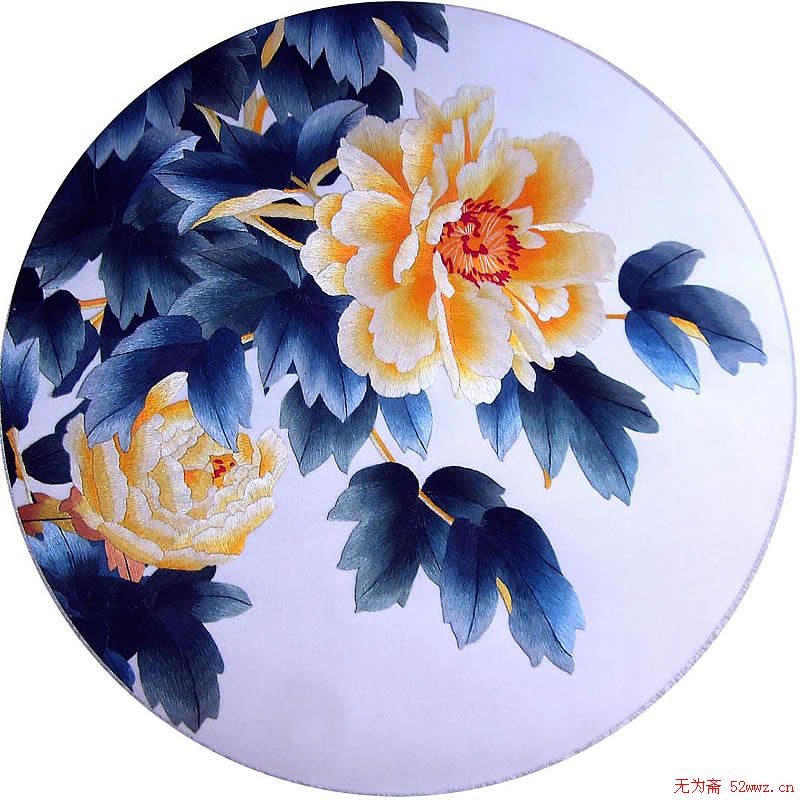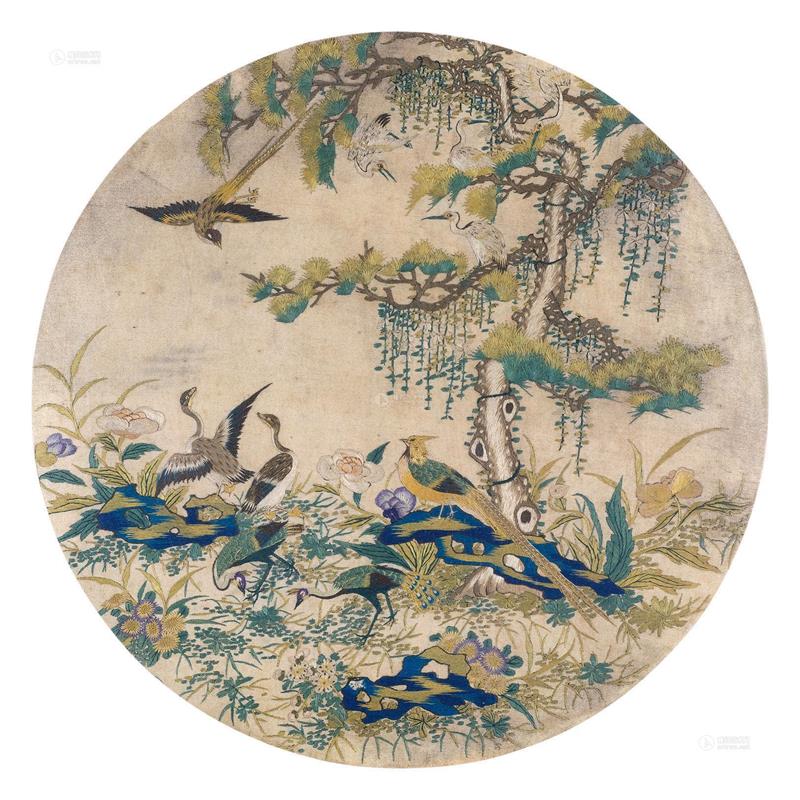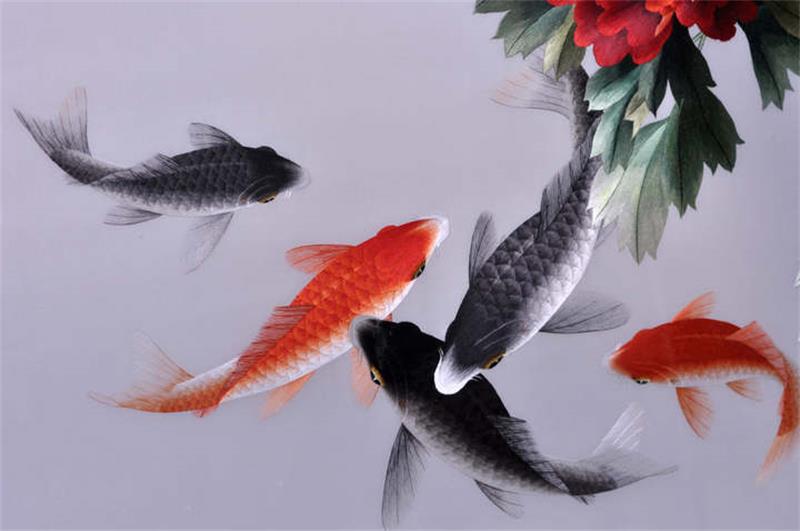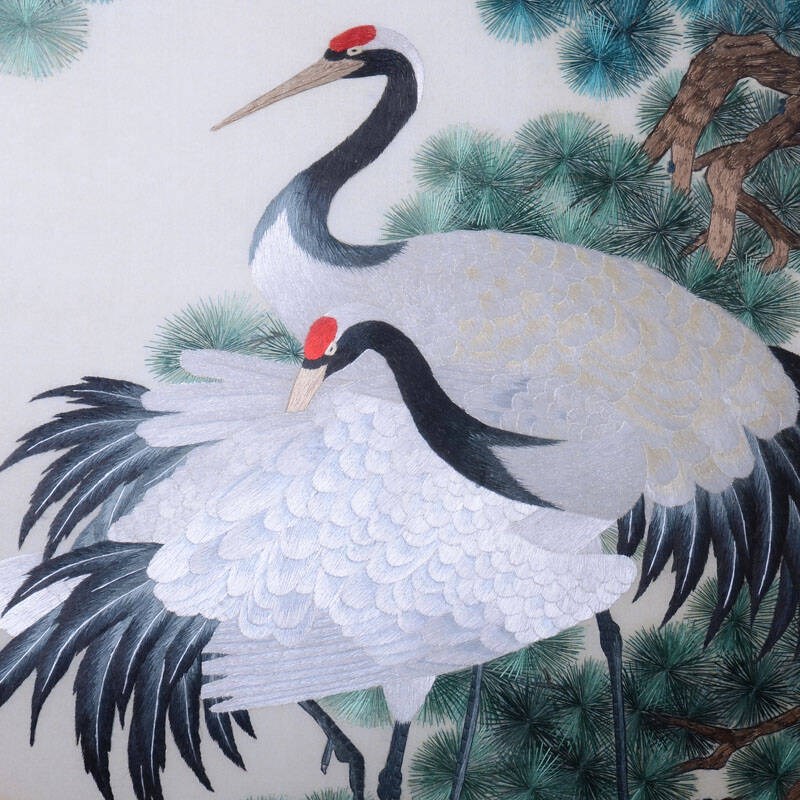There is only one piece of embroidery from the Yuan Dynasty in the National Palace Museum in Taipei, and it is still a legacy of the Song Dynasty. The pile used by the Yuan was a bit coarse, and the stitches were not as dense as those of the Song Dynasty. The rulers of the Yuan dynasty believed in Lamaism, and embroidery was used not only for general dress embellishment, but also for the production of Buddhist statues, sutra scrolls, banners and monk's hats.
It is represented by the Yuan Dynasty "Embroidered Dense Vajra Statue" preserved in the Potala Palace in Tibet, which has a strong decorative style. The embroidery unearthed from the tomb of Li Yu'an in the Yuan Dynasty in Shandong was found to be made by applying damask in addition to various stitches. It is an embroidery of plum blossoms on a skirt, and the petals are embroidered by adding silk and embroidering, which is three-dimensional.
The dyeing and weaving process of the Ming Dynasty became developed during the Xuande period. The most innovative embroidery of the Ming dynasty was sprinkled thread embroidery. The embroidery is done with double twisted threads counted by the yarn holes of the square hole yarn, with geometric patterns or with the main flower of pile.
In the Qing Dynasty, most of the embroideries for the imperial court were drawn by the painters of Ruyi Hall of the Palace Office, approved and then sent to the three embroidery workshops under the jurisdiction of Jiangnan Weaving, where the embroideries were made according to the patterns. In addition to the imperial court embroidery, there were also many local embroideries, such as Lu embroidery, Guangdong embroidery, Hunan embroidery, Beijing embroidery, Su embroidery, and Shu embroidery, each with its own local characteristics. Su, Shu, Yue and Xiang were later called the "Four Famous Embroideries", of which Su embroidery was the most famous.
During the heyday of Su embroidery, there were many different stitches, fine embroidery work, and clever color matching. Most of the designs made were for celebration, longevity and good fortune, especially for flowers and birds, which were very popular, and the famous embroiderers came out one after another.
During the late Qing Dynasty and early Republican period, when Western learning was gaining ground in the East, innovative works of Suzhou embroidery emerged. During the Guangxu period, Shen Yunzhi, the wife of Yu Jue, became famous in Suzhou for her excellent embroidery skills. When she was 30 years old, she embroidered eight frames of "Eight Immortals Celebrating Longevity" to celebrate the 70th birthday of Empress Dowager Cixi, and was given the characters "Fu" and "Shou".
Shen embroidered the old method with new ideas, showed light and color, and used realism, and expressed the characteristics of Western painting Xiao Shen simulation in the embroidery, creating "simulation embroidery", or "art embroidery", with various stitches and a three-dimensional sense.
Nowadays, this exquisite craft has already gone abroad and become a beautiful scenery on the international stage. When traditional skills are used in the fashion field, they blossom in a strange way. It shows the extraordinary charm of national culture.
Nowadays, Chinese embroidery is almost all over the country. Suzhou embroidery, Hunan Hunan embroidery, Sichuan Shu embroidery and Guangdong Guangdong embroidery are known as the four famous embroideries of China. The embroidery works of art that have developed to the present day are finely crafted and complex.




Post time: Mar-15-2023

